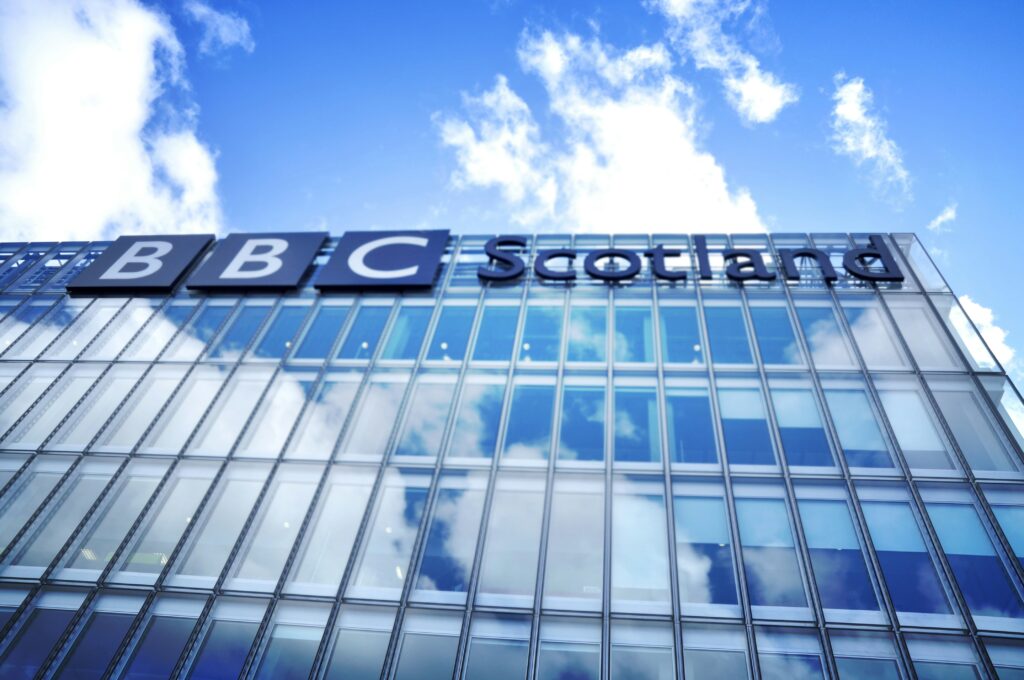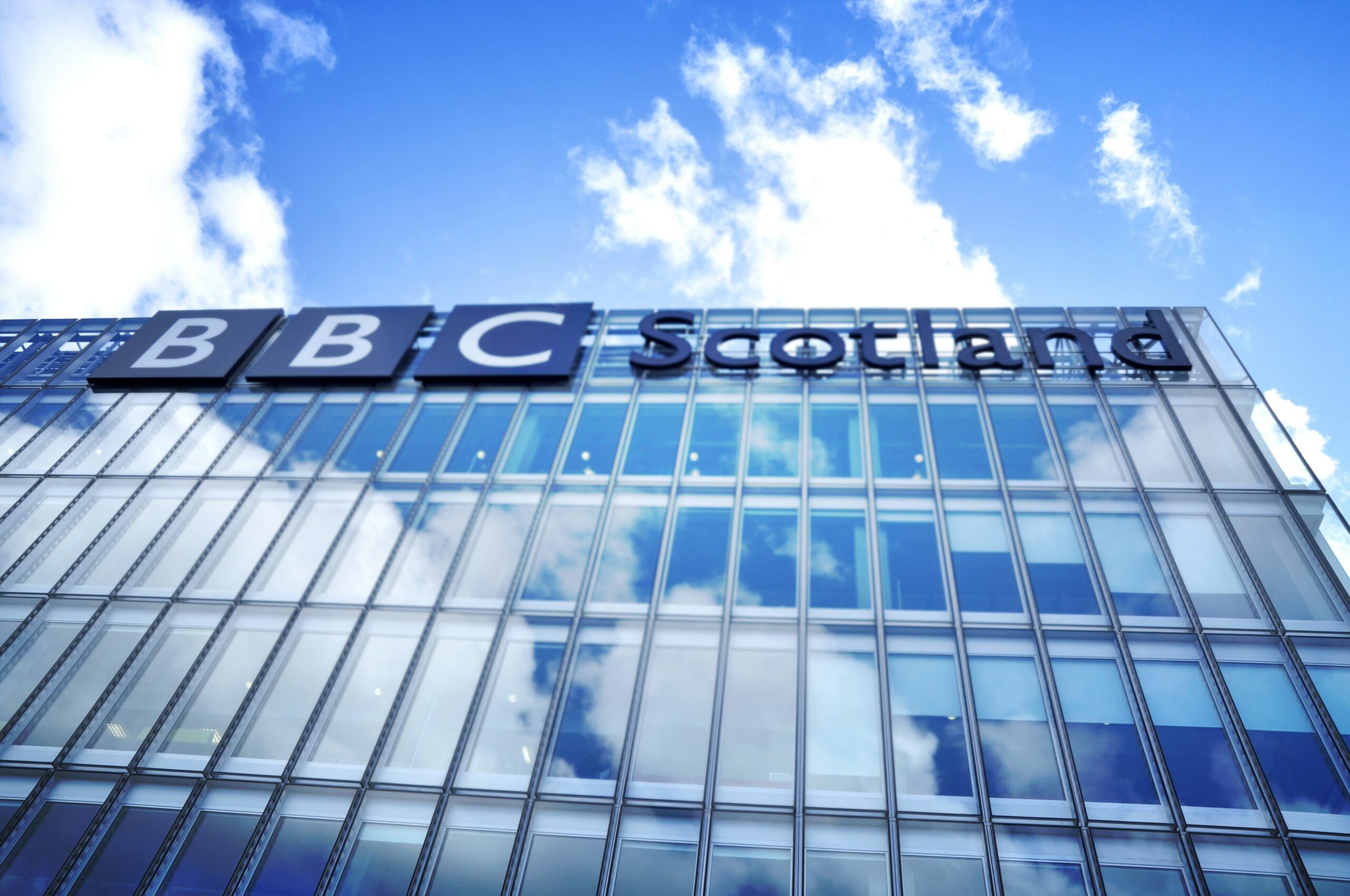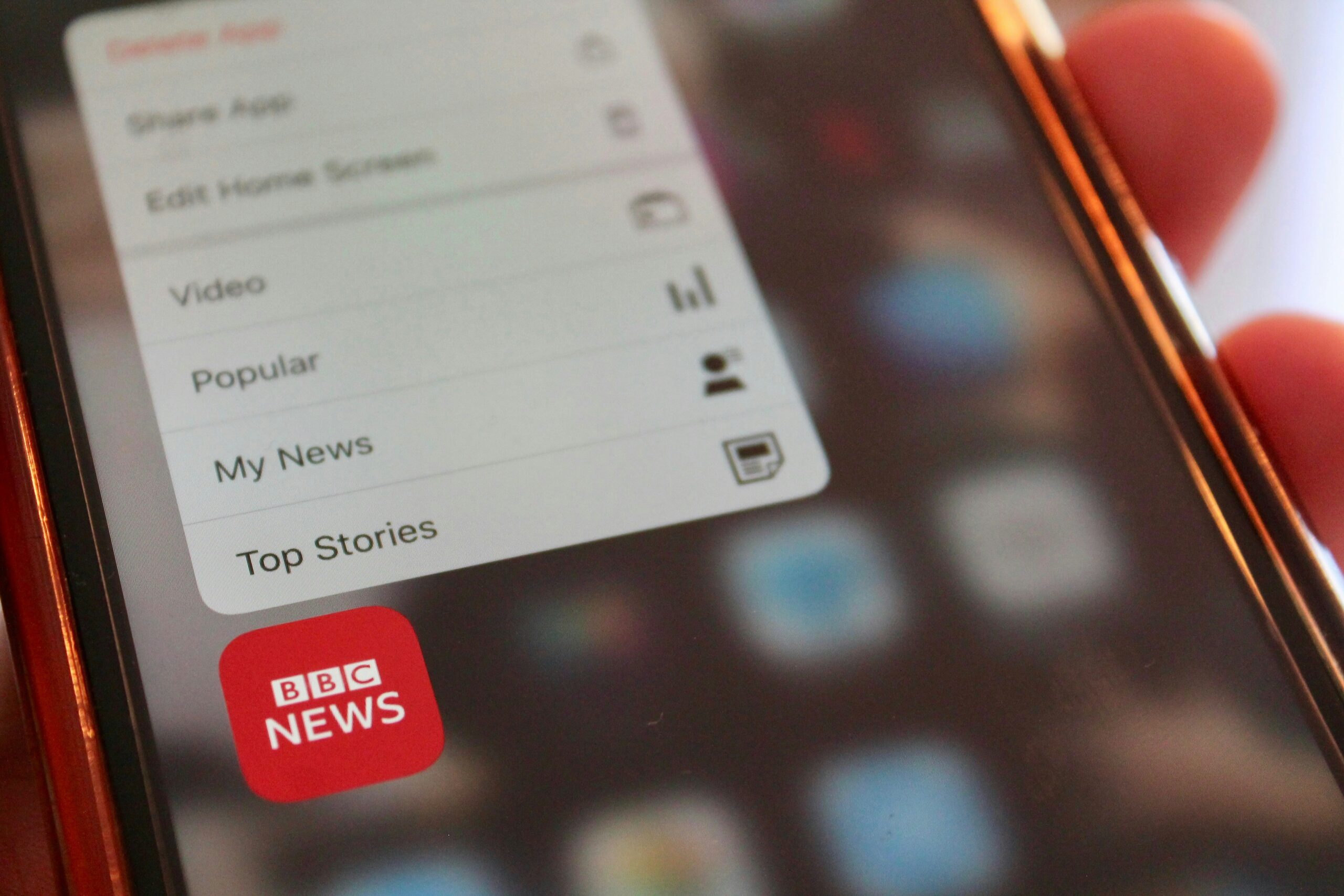BBC Logo: Meaning, History, Design Influences, and Evolution

Contents
When it comes to iconic logos, the BBC logo holds a special place in the hearts of television viewers around the world. It’s a symbol that represents not only a trusted source of news and entertainment but also the rich history and evolution of broadcasting itself. In this article, we will delve deep into the meaning, history, design influences, and evolution of the BBC logo, exploring its significance and the factors that shaped its iconic look.
Understanding the BBC Logo
At first glance, the BBC logo might seem like a simple design, but it holds a deeper meaning that reflects the values and mission of the renowned British broadcasting corporation. The logo consists of three block letter B’s, each in a different color, arranged in a playful slanted manner. This arrangement symbolizes movement, modernity, and the dynamic nature of the ever-evolving media landscape.
The Symbolism Behind the BBC Logo
Each color in the BBC logo represents a different aspect of the corporation’s identity. The upright blue B represents trust, reliability, and authority – qualities that the BBC has successfully cultivated over the years. The red B, slightly tilted, signifies energy, passion, and creativity, reflecting the diverse range of programming offered by the BBC. Finally, the green B, also tilted, symbolizes growth, innovation, and adaptation to new technologies and trends.

The Importance of Logo in Broadcasting
The logo is the face of a brand – it’s what people remember when they think of the BBC. For a broadcasting corporation like the BBC, the logo plays an essential role in building trust and credibility among viewers. It serves as a visual representation of the high standards of journalism and quality programming that the BBC delivers day in and day out. Moreover, the logo acts as a beacon, guiding audiences towards the latest news, captivating documentaries, and captivating dramas that have become synonymous with the BBC’s unmatched storytelling.
Furthermore, the BBC logo has become an iconic symbol in the broadcasting industry. Its distinctive design and recognizable colors make it instantly identifiable, even from a distance. This level of brand recognition is crucial for the BBC’s continued success and influence in the media landscape.
Moreover, the BBC logo has undergone several subtle changes over the years to keep up with the evolving design trends and technological advancements. These modifications ensure that the logo remains fresh and relevant, reflecting the BBC’s commitment to staying at the forefront of the industry.
Additionally, the BBC logo is not only limited to the television screen. It is present across various platforms, including online streaming services, radio broadcasts, and even merchandise. This widespread presence reinforces the BBC’s brand identity and creates a sense of unity among its diverse audience.
In conclusion, the BBC logo is much more than a simple arrangement of letters. It represents the core values and aspirations of the British broadcasting corporation, while also serving as a visual anchor for its viewers. With its vibrant colors and dynamic design, the logo captures the essence of the BBC’s commitment to delivering trustworthy, innovative, and captivating content to audiences worldwide.
Tracing the History of the BBC Logo
The journey of the BBC logo began many decades ago, taking various forms and iterations along the way. Let’s take a closer look at its evolution and the significant changes it underwent throughout history.
The Original BBC Logo
Back in 1922, when the BBC was in its infancy, the original logo featured the words “BBC” in a simple yet elegant typeface. This logo represented the early years of broadcasting, where radio was the primary medium and the BBC was pioneering a new era of mass communication.
Significant Changes Over the Years
As television overtook radio as the dominant medium, the BBC logo went through several transformations to adapt to the changing times. In the 1950s, a new logo featuring the iconic blocks spelling out “BBC” made its debut. This logo reflected the technological advancements of the time and the shift towards a more visual form of storytelling.
In the 90s, with the rise of digital media, the BBC logo underwent another transformation, adopting a more modern and minimalist look. This change was a testament to the corporation’s ability to keep up with the ever-evolving landscape of media consumption.

Design Influences on the BBC Logo
The design of the BBC logo was not created in isolation; rather, it was influenced by various design trends and technological advancements that shaped the field of logo design over the years.
The Role of Design Trends in Logo Evolution
As design trends evolved from ornate and intricate details to minimalist and clean aesthetics, the BBC logo followed suit. Minimalism became a dominant force in logo design, as it allowed for greater versatility and adaptability across different media platforms. The simplicity of the BBC logo ensured that it remained visually appealing and easily recognizable, regardless of the medium through which it was viewed.
Impact of Technological Advancements on Logo Design
The advent of digital technology brought about new possibilities and challenges for logo design. The BBC logo had to adapt to various screen sizes, resolutions, and color spaces to ensure optimal visibility and impact. The designers behind the BBC logo embraced this challenge, leveraging advancements in digital design tools and techniques to create a logo that remained striking and instantly recognizable in the digital era.
The Evolution of the BBC Logo
The evolution of the BBC logo was not a one-time event; rather, it was a gradual process that involved careful planning, research, and design expertise. Let’s explore the steps involved in the logo redesign process and the significance of the modern BBC logo.
The Process of Logo Redesign
Logo redesigns are complex projects that require thorough research, collaboration with stakeholders, and an understanding of the brand’s identity. When redesigning the BBC logo, designers conducted extensive market research and user testing to ensure that the new design resonated with audiences and accurately represented the core values of the corporation.
The Modern BBC Logo and its Significance
The modern BBC logo, with its distinctive slanted arrangement of colorful B’s, is a symbol of the corporation’s commitment to innovation, creativity, and adaptability. It stands as a visual representation of the rich history and heritage of the BBC, while also signaling its readiness to embrace the future of broadcasting.

The Future of the BBC Logo
As we look to the future, it is important to consider the role that the BBC logo will play in the corporation’s branding strategy.
Predicting Logo Trends
The world of logo design is constantly evolving, influenced by cultural shifts, emerging technologies, and changing consumer expectations. It’s impossible to predict with certainty what the future holds for logo design, but one thing is clear – the BBC logo will continue to adapt and evolve as the broadcasting landscape transforms.
The Role of the Logo in BBC’s Future Branding Strategy
The BBC logo is not just a static symbol; it’s a dynamic and living representation of the corporation’s brand. In the future, the logo will continue to serve as a visual anchor, guiding audiences towards the latest and most compelling content. It will be a symbol of credibility, trust, and the unwavering commitment to delivering high-quality news, entertainment, and educational programming to viewers worldwide.
In conclusion, the BBC logo is more than just a visual element – it’s a powerful symbol of the corporation’s rich history, its ability to adapt to change, and its commitment to excellence. As the broadcasting industry continues to evolve, the BBC logo will undoubtedly stand the test of time, serving as a beacon of reliable, informative, and engaging storytelling for generations to come.
Inspired by the iconic BBC logo and its enduring legacy? Your brand deserves a logo that’s just as memorable and impactful. With Boon, you can harness the power of Artificial Intelligence to craft a custom logo that resonates with your values and vision. Whether you’re looking to captivate your audience, weave compelling narratives, or fortify your business presence, Boon makes it effortless. Ready to create a logo that stands the test of time? Let’s make a logo!

Mia Vargas is our Senior SEO & Branding Specialist, a dynamic force in digital strategy with a keen eye for brand storytelling. With over a decade of experience in optimizing online visibility and shaping brand identities, Mia seamlessly combines her technical SEO expertise with her passion for creativity. She is skilled at crafting strategies that not only elevate search rankings but also resonate with target audiences, ensuring our clients build meaningful, lasting connections. Known for her innovative approach and trend-focused insights, Mia plays a crucial role in driving our team to stay ahead in a rapidly changing digital landscape, balancing analytics with artistic flair to deliver impactful results.
